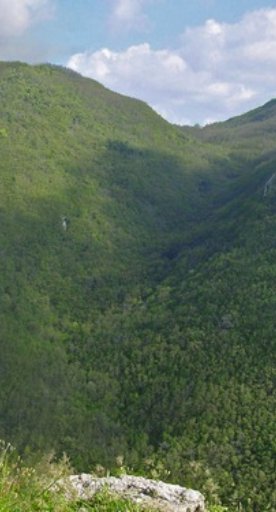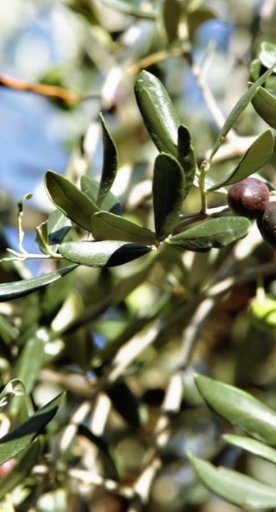Radicondoli
A delightful medieval village nestled in the Sienese hills
The medieval town of Radicondoli sits on high ground and dominates the surrounding colline metallifere ('metal-bearing' hills) of the Sienese countryside. Walking through it, we can still detect traces of the Lombards. Founded at least a thousand years ago, Radicondoli was controlled by the bishops of Volterra, then by the Aldobrandeschi, before eventually submitting to Siena. The centre follows the natural contours of the hills, and in the southern zone you find Porta Olla, the only remaining gate of the three that stood in the walls of the castle, of which some ruins survive today.
Ever since antiquity the wool-working was one of the principal activities in Radicondoli. Probably introduced by neighbouring Volterra, the industry began on a domestic scale with the aim of obtaining 'clothes wool' for common use, and it developed as a result of the growth of Belforte and Radicondoli itself, which in the 14th century became important to the Sienese state as centres of textile production. Evidence of this era remains in the buildings of the town, where some houses have two entrances, one that led into the living quarters and one that led out to the marketplace.
What to see in Radicondoli
The heart of the town is certainly the Collegiate Church of Santi Simone e Giuda, which was built from 1589 over the ruins of an old Romanesque parish church. Along the main street stand the church and monastery of Santa Caterina delle Ruote, which dates from the middle of the 13th century. A series of palazzi built in the 15th and 16th centuries also face out onto the street, such the Palazzo Comunale (originally Berlinghieri), which is architecturally typical of the late 1500s. Further down we find the Romanesque Parish Church of San Giovanni Battista (or the Pieve Vecchia della Madonna), and beyond the centre the Franciscan Convent of the Osservanza, built in 1494 and which today is home to a renowned music school.
At the time when more and more churches were being built, the territory of Radicondoli had a lot of work done to its castles, a phenomenon that saw the fortification of already existing sites like Montingegnoli as well as newconstructions like the castles of Fosini, Falsini and Elci, on which the feudal families relied. All these castles had the same structure: foundations on high ground, a ring of defensive walls, a fortified internal area, a citadel and a guard tower. Woods, olive groves and cultivated fields even today encircle the government dwellings and the villas of Anqua and Solaio, true Renaissance jewels in a setting of rare beauty.
The nearby town of Belforte, one of the castles of the Aldobrandeschi, increased in importance after 1180. The perimeter of the castle walls is still visible, with some towers and the old keep. The little town has preserved its medieval layout, with a main street that runs through it longitudinally, between the patrician houses and the Palazzo Pubblico, a tower-like building with square, blocky walls. There are still at least two buildings to recommend, the 14th-century Parish Church of Santa Maria and the nearby guest house which, along with that at Radicondoli, suggests that this central area lay somewhere along a busy road, probably one that connected Valdelsa with Val di Cecina and the mineral zone of Montieri.
The heart of the town is certainly the Collegiate Church of Santi Simone e Giuda, which was built from 1589 over the ruins of an old Romanesque parish church. Along the main street stand the church and monastery of Santa Caterina delle Ruote, which dates from the middle of the 13th century. A series of palazzi built in the 15th and 16th centuries also face out onto the street, such the Palazzo Comunale (originally Berlinghieri), which is architecturally typical of the late 1500s. Further down we find the Romanesque Parish Church of San Giovanni Battista (or the Pieve Vecchia della Madonna), and beyond the centre the Franciscan Convent of the Osservanza, built in 1494 and which today is home to a renowned music school.
At the time when more and more churches were being built, the territory of Radicondoli had a lot of work done to its castles, a phenomenon that saw the fortification of already existing sites like Montingegnoli as well as newconstructions like the castles of Fosini, Falsini and Elci, on which the feudal families relied. All these castles had the same structure: foundations on high ground, a ring of defensive walls, a fortified internal area, a citadel and a guard tower. Woods, olive groves and cultivated fields even today encircle the government dwellings and the villas of Anqua and Solaio, true Renaissance jewels in a setting of rare beauty.
The nearby town of Belforte, one of the castles of the Aldobrandeschi, increased in importance after 1180. The perimeter of the castle walls is still visible, with some towers and the old keep. The little town has preserved its medieval layout, with a main street that runs through it longitudinally, between the patrician houses and the Palazzo Pubblico, a tower-like building with square, blocky walls. There are still at least two buildings to recommend, the 14th-century Parish Church of Santa Maria and the nearby guest house which, along with that at Radicondoli, suggests that this central area lay somewhere along a busy road, probably one that connected Valdelsa with Val di Cecina and the mineral zone of Montieri.
Nearby
The landscapes of the Valdelsa Valdicecina are simply wonderful, featuring isolated churches, villages and country houses. Lying on a green hill, San Gimignano stands out with its unmistakable profile. In its heyday, the village came to have 72 towers and tower-houses, 13 of which are still around today, earning it the name of the "Manhattan of the Middle Ages".
What about the still intact fortifications of Monteriggioni? With its "crown" of towers, the town shines from the top of a hill and is known for its mention by the Supreme Poet Dante Alighieri in the Divine Comedy.
The perfect itinerary then moves to Volterra, the ancient Veláthri: one of the main city-states of ancient Etruria which during the Middle Ages was the seat of an important bishopric. For centuries, the village has been known for the processing of alabaster whose artifacts are one of the most important products of Italian craftsmanship today.
The landscapes of the Valdelsa Valdicecina are simply wonderful, featuring isolated churches, villages and country houses. Lying on a green hill, San Gimignano stands out with its unmistakable profile. In its heyday, the village came to have 72 towers and tower-houses, 13 of which are still around today, earning it the name of the "Manhattan of the Middle Ages".
What about the still intact fortifications of Monteriggioni? With its "crown" of towers, the town shines from the top of a hill and is known for its mention by the Supreme Poet Dante Alighieri in the Divine Comedy.
The perfect itinerary then moves to Volterra, the ancient Veláthri: one of the main city-states of ancient Etruria which during the Middle Ages was the seat of an important bishopric. For centuries, the village has been known for the processing of alabaster whose artifacts are one of the most important products of Italian craftsmanship today.
Events
The Radicondoli Festival has a long and prestigious tradition; a summer event that combines prose, music, screenings, dance and theater for children.
The May Day festival is one of the most traditional celebrations in the town. The Fanfare wakes the locals of Radicondoli at dawn and takes them to the historic center. Along the way, hospitality is offered with rich breakfasts, accompanied by songs and music.
The Radicondoli Festival has a long and prestigious tradition; a summer event that combines prose, music, screenings, dance and theater for children.
The May Day festival is one of the most traditional celebrations in the town. The Fanfare wakes the locals of Radicondoli at dawn and takes them to the historic center. Along the way, hospitality is offered with rich breakfasts, accompanied by songs and music.
Typical dishes and products
The hills of the area produce excellent quality extra virgin olive oil and, not surprisingly, Radicondoli is one of the Cities of Oil.
Sheep farming, which had an ancient history linked to sharecropping, plays an important role. Even today, the sheep are reared in a traditional way and foraged with natural food, producing a milk from which various types of cheeses are obtained, from ricotta to aged pecorino.
The hills of the area produce excellent quality extra virgin olive oil and, not surprisingly, Radicondoli is one of the Cities of Oil.
Sheep farming, which had an ancient history linked to sharecropping, plays an important role. Even today, the sheep are reared in a traditional way and foraged with natural food, producing a milk from which various types of cheeses are obtained, from ricotta to aged pecorino.
What’s nearby?
Valdelsa Valdicecina






















